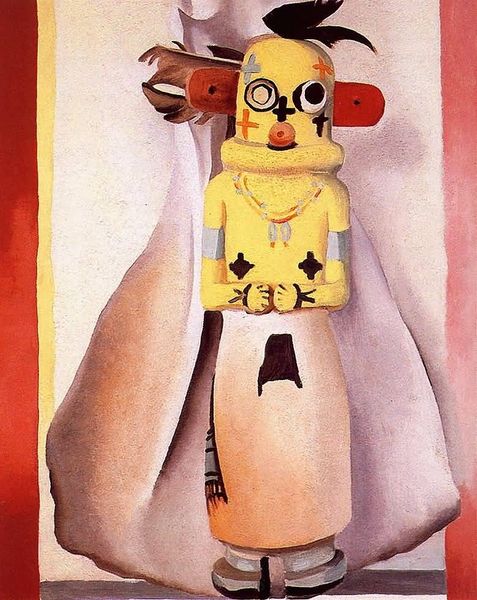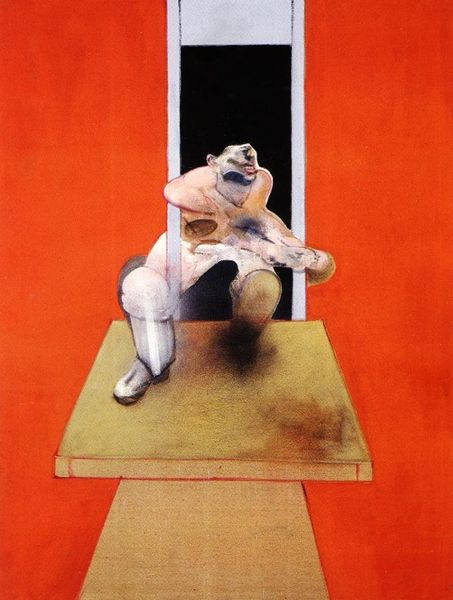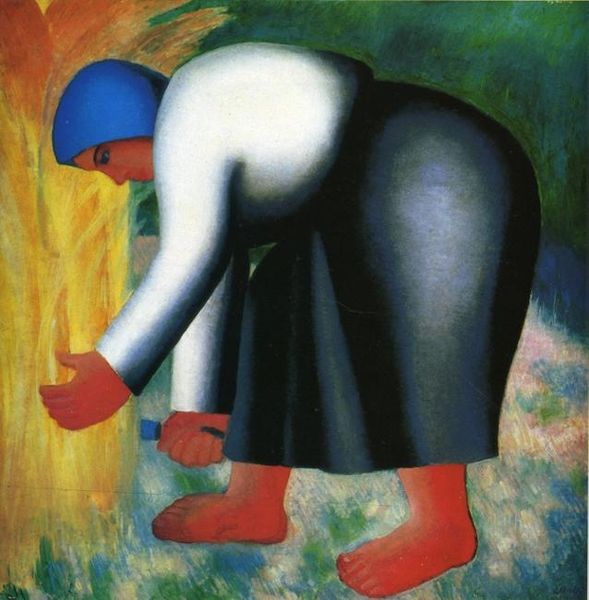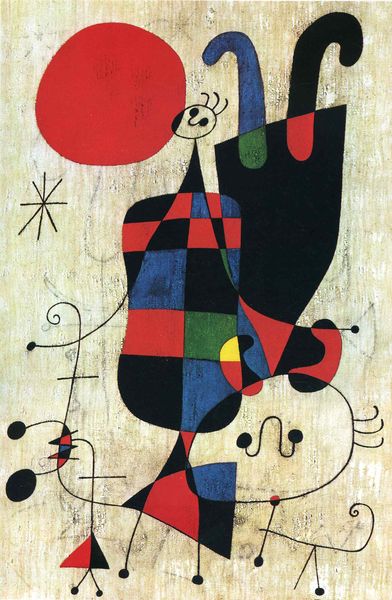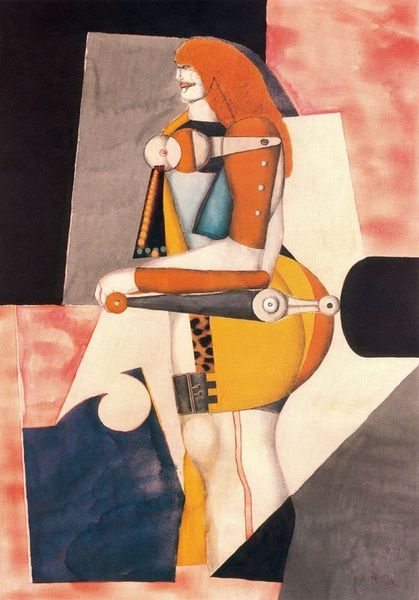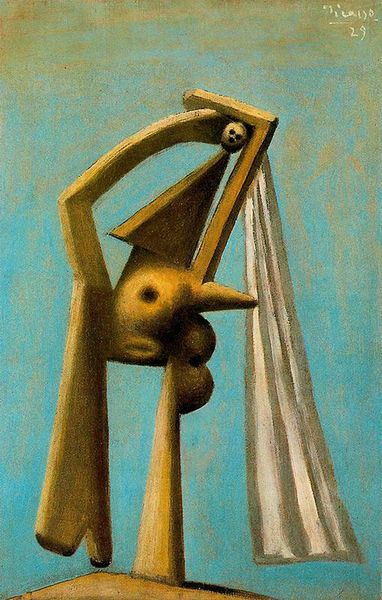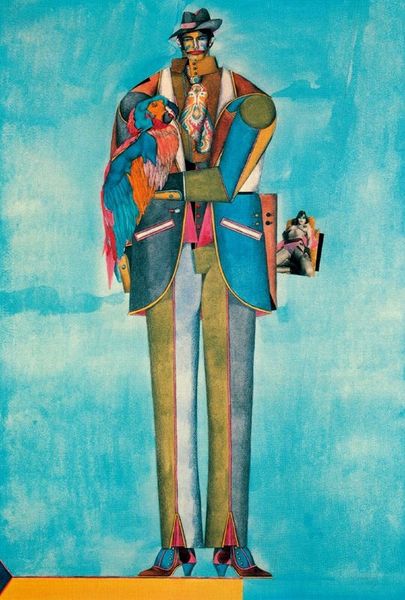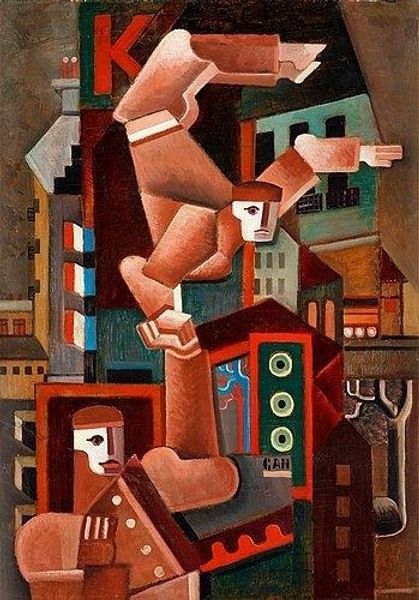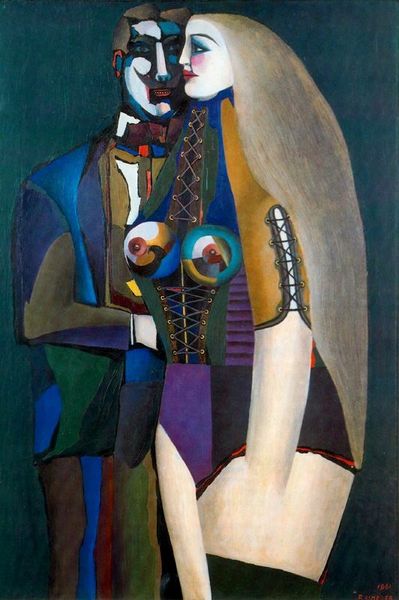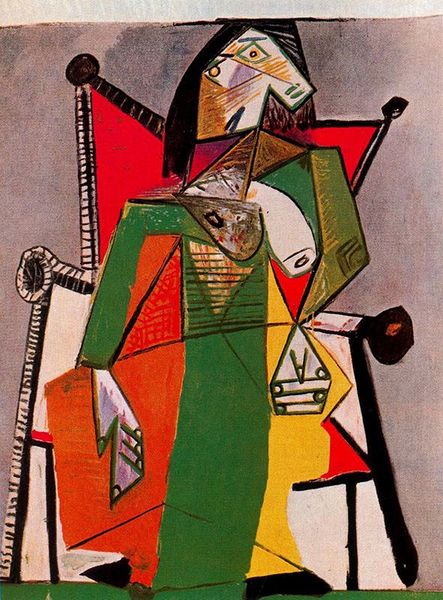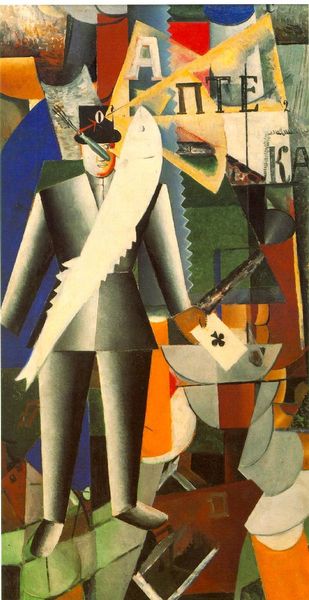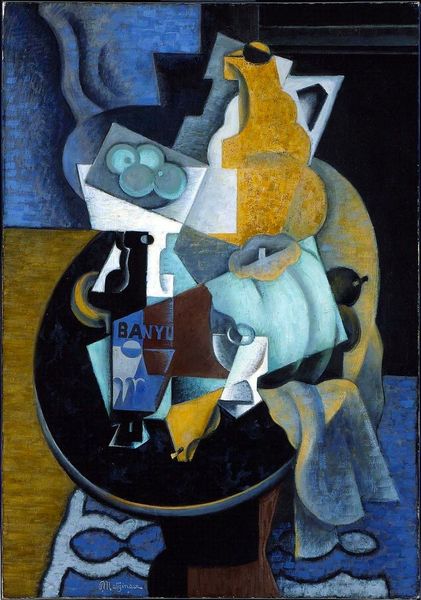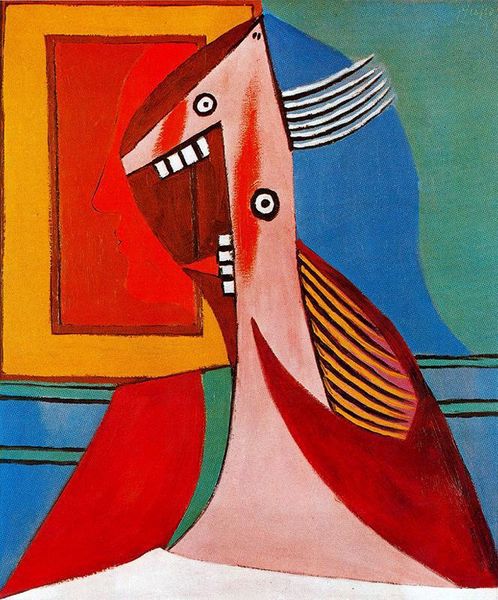
painting, acrylic-paint
#
portrait
#
cubism
#
painting
#
caricature
#
acrylic-paint
#
figuration
#
geometric
#
surrealism
#
surrealism
Copyright: Richard Lindner,Fair Use
Curator: What strikes me immediately is the deliberate arrangement of the pictorial elements—the way the artist uses these sharp cubist-inspired shapes. Editor: It gives a claustrophobic feel, doesn't it? This confined space with an oddly-proportioned figure suspended in mid-air and what could that even be for? This looks like a disturbing stage setting—an investigation maybe of suppressed emotion with strong primary colors to suggest a kind of manic energy. Curator: Exactly. Now, what we’re looking at here is Richard Lindner's painting, "The Child's Dream." Lindner worked across a diverse array of mediums but was particularly focused on painting and figuration to express narratives within symbolic contexts, but its date is unfortunately unknown. Lindner was fascinated by geometric forms—a marked style which creates both order and distortion, something visible even today in the artworld. Editor: The labor needed to make something that *looks* crude, it really intrigues me. It feels less a traditional oil or acrylic painting and more like some bizarre, fabricated reality built of distinct, carefully joined material and shapes. I find myself curious about the application of that acrylic—what steps and processes were used? The figure seems manufactured or like one might manipulate wooden puppets with exaggerated gestures. It’s captivating but unnerving. Curator: Indeed. Lindner masterfully employs line and form to create this unsettling sense. Take the subject's pose, it's as if arrested mid-skip and draws the eye upwards through careful orchestration. Note that these geometric elements function as compositional weights within the pictorial space, adding structural significance. It certainly isn't casual, the elements that look odd at first actually contribute to a rigorous formal construct. Editor: Yes, but even with a considered composition—I can't shake off my interest for the materiality itself! Each section of color in the clothes and surrounding shapes looks applied in separate instances—were these hand-cut, or produced in a factory before they were put in place on this ‘stage’? Curator: A vital thing you point out when trying to get under the skin of the piece, I do feel the semiotic meaning in each chosen tone adds to its intended effect! It's a visual puzzle which pushes beyond mere representation. It's this depth in artistry of how shape and scale distort reality that I adore! Editor: Indeed. The exploration of this unusual medium and form speaks to something deeper here – I can feel that every element placed reflects purpose and skill. I feel I can't simply see the artwork, but have a desire to know how it was made and constructed from various parts to truly understand the artist's meaning!
Comments
No comments
Be the first to comment and join the conversation on the ultimate creative platform.
